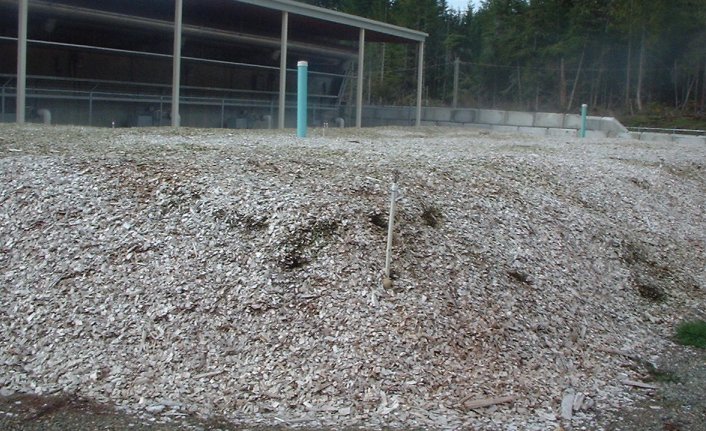Biofilter: Difference between revisions
m (reorganized) |
m (categorized) |
||
| Line 11: | Line 11: | ||
==Links== | ==Links== | ||
*The soil biofilter is actually an older idea - see [https://patents.google.com/patent/US2793096A/en US Patent #2,793,096 (from 1957)]. | *The soil biofilter is actually an older idea - see [https://patents.google.com/patent/US2793096A/en US Patent #2,793,096 (from 1957)]. | ||
[[Category:Food and Agriculture]] | |||
[[Category: Materials]] | |||
Revision as of 00:35, 11 March 2016
From Wikipedia: Biofiltration is a pollution control technique using living material to capture and biologically degrade pollutants. Common uses include:
- processing waste water
- capturing harmful chemicals or silt from surface runoff
- and microbiotic oxidation of contaminants in air.
Pioneering work at New Alchemy Institute
In the 1980s, New Alchemy Institute experimented with composting inside a greenhouse. The goal was to capture the heat and CO2 released from the composting process to heat the greenhouse and enrich the air with CO2 for more rapid growth. This worked amazingly well but they noticed that the compost sometimes produced bad odors that made it unpleasant to work in the greenhouse. They solved the problem by venting air from the compost and piping it into soil under mild pressure. The soil acted as a biofilter, trapping the smells. Potential airborne pathogens may also be trapped and eliminated in this way. For more information abput the NAI Composting Greenhouse, read the report, published in 1986 (internal copy here)
Links
- The soil biofilter is actually an older idea - see US Patent #2,793,096 (from 1957).
